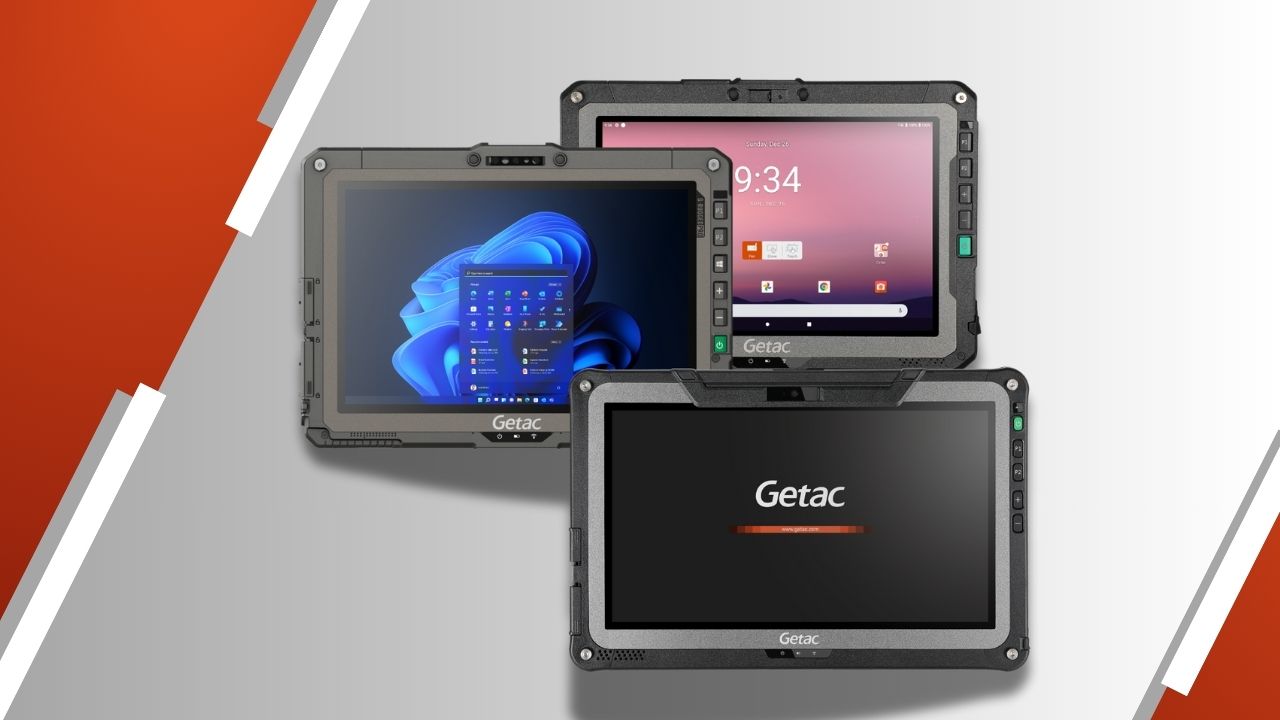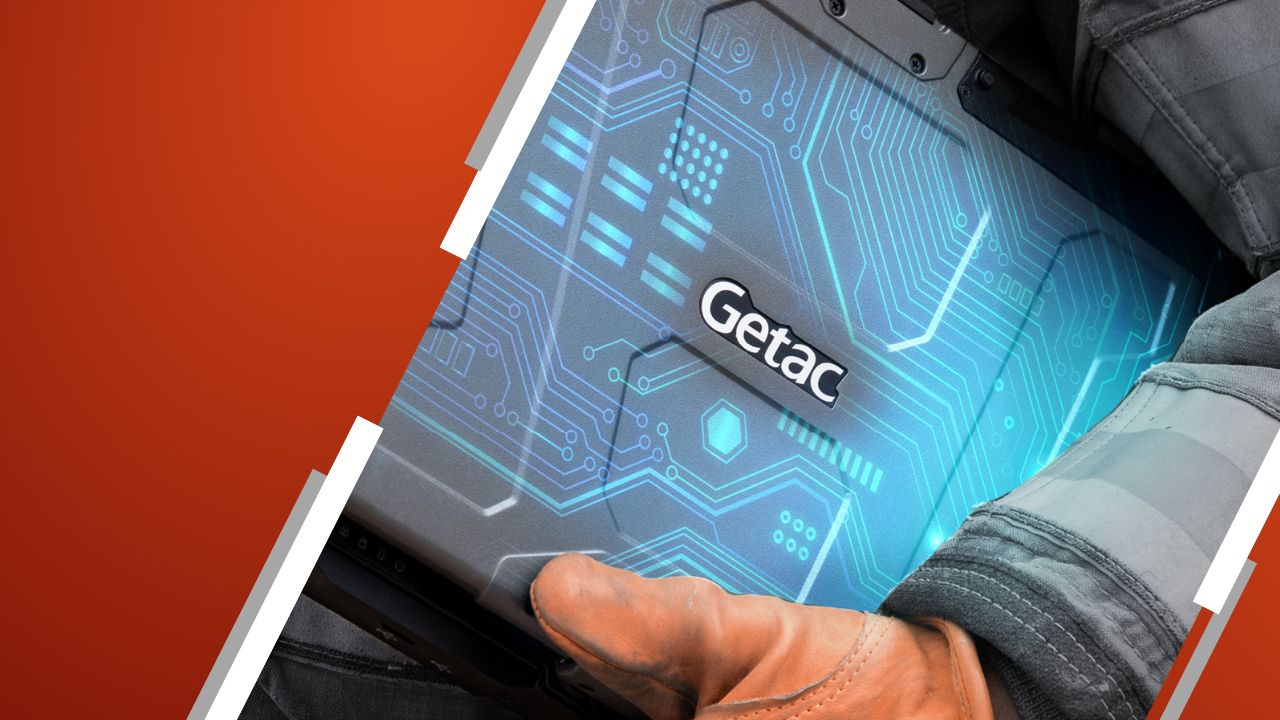As one of the leading rugged computer providers, Getac offers extensive rugged computing product lines and serves a wide range of vertical markets.

Getac Select
A combination of rugged computing devices, software, accessories and professional services in a purposeful range of specifically tailored solutions.
Getac Custom Solutions: Built For You
With Getac Custom Solutions, adapt our proven rugged devices with purpose-built features and add-ons for your unique industry’s needs. Tailor-made to fit your exact workflow, environment, and operational goals.
Defense
Mission-critical COTS computing that delivers high powered processing and reliability in operational environments.
Public Safety
Ambulance, Fire & Rescue and Policing applications
Utilities
Smart Meter Reading and Installation, On-site Safety, Utility Asset Management, Workforce Management for Utilities, Mobile GIS, Surveying and Mapping
Transportation & Logistics
Railroad Management, Airport Management, Port Management, Long-haul Delivery Fleet Management, Warehouse Materials Handling
Industrial Manufacturing
Industrial Programming and Robotic Control, Facility management, Compliance and Inspections, Workforce Management, Inventory and Warehouse Management, Factory Automation and Plant Monitoring, EAM and CMMS Solutions.
Automotive
Optimized Rugged Mobile Solutions to drive a smarter approach throughout the automotive value-chain.
Natural Resources
Mining, Forestry and Construction applications
Oil & Gas
Remote Support, Asset Management, Field Data Analysis, Workplace Safety
Technology for sustainability is no longer a long-term goal. Modern utility organizations must navigate the demands of grid modernization, regulatory compliance, and socio-economic responsibility. Across water, electricity, gas, and renewable segments, utility managers, procurement officers, IT teams, and compliance leaders are rethinking how infrastructure investments align with sustainable technologies and long-term asset performance.
The concept of “sustainable technology” is not just about reducing carbon emissions; it is about maximizing value across the entire lifecycle of utility operations. Rugged devices are pivotal in technological sustainability, and utility companies increasingly integrate them into broader asset management strategies.
Adopting and publicizing Environmental, Social, and Governance (ESG) frameworks has become an expectation for utility companies. ESG is critical for public perception, investor confidence, creditworthiness, and regulatory compliance. ESG frameworks address environmental and social impacts, ensuring technological advancements align with sustainability goals.
According to financial analysts, utilities with strong ESG practices often see a 5-10% improvement in credit ratings. This improvement results in lower borrowing costs and improved access to capital. For investor-owned and public utilities, demonstrating environmental responsibility provides a strategic advantage.
ESG considerations are essential for businesses to achieve long-term success and to create value for society. By integrating ESG principles, companies are poised to address the challenges posed by environmental and societal changes. Integrating ESG with business priorities benefits the environment and enables responsible growth and innovation within the organization.
Sustainable technology strategies play a pivotal role in achieving ESG goals. These technologies enable companies to reduce their environmental impact and improve social responsibility. Business leaders must prioritize ESG considerations to ensure their organizations are well-positioned for long-term success and contribute to a more sustainable future. Sharing knowledge is crucial for developing strategies for sustainability and responsible AI.
ESG performance is increasingly important for investors, customers, and other stakeholders, who expect companies to demonstrate their commitment to sustainability and social responsibility. Companies prioritizing ESG issues can achieve better financial performance, improved brand reputation, and increased business value. Adopting sustainable technologies and ESG-focused strategies can help businesses outpace the competition and create a more sustainable future.
Sustainability is a critical, higher-level concept that refers to maintaining or supporting a process without depleting natural resources, thereby ensuring a sustainable future. Sustainability balances economic growth, environmental protection, and social progress, leading to a more sustainable business model.
Sustainable technologies are pivotal in achieving sustainability goals by reducing energy consumption, carbon emissions, and the environmental impact of business functions. Corporate leaders increasingly recognize the importance of sustainability and invest in sustainable technologies to improve their ESG performance.
The sustainability journey requires a long-term commitment to creating a green economy and promoting sustainable living by adopting digital technologies and sustainable tech. Companies can benefit from sustainability by improving their financial performance, enhancing their brand reputation, and creating new business opportunities through sustainable product development.
Developing sustainable technology strategies is crucial for addressing climate change, reducing carbon footprints, and promoting energy efficiency. By adopting sustainable technologies and practices, businesses can reduce their environmental impact, enhance their sustainability performance, and contribute to a healthier Earth.

Adopting new technologies designed to improve sustainability can help overcome organizational challenges.
Federal and state regulators are tightening expectations around infrastructure resilience and carbon footprint reduction to achieve the The Intergovernmental Panel on Climate Change (IPCC)'s goal of keeping global temperature rise from pre-industrial levels below 1.5°C. Key drivers include:
The Environmental Protection Agency (EPA) estimates that upgrading aging utility infrastructure can cut energy use by 15%. Upgrading infrastructure can also conserve resources and reduce environmental impact.
The U.S. Department of Energy (DOE) reports that smart grid technologies can lower operational costs by up to 25% through enhanced automation and increased efficiency, resulting in significant reductions in power usage.
The Infrastructure Investment and Jobs Act (IIJA) and other federal funding initiatives now favor sustainability and durability in procurement decisions.
These developments require procurement teams to evaluate devices by upfront cost, total cost of ownership (TCO), and life cycle climate performance (LCCP). LCCP considers primary, secondary, and embodied carbon emissions.
Despite growing sustainability mandates, utility organizations face several significant challenges:
Frequent equipment turnover due to inadequate durability increases costs and electronic waste.
Incompatibility between generations of hardware forces full infrastructure replacements.
Supply chain disruptions make lifecycle planning unpredictable.
Short product life spans limit sustainability gains and raise the total cost of ownership..
Adopting new technologies designed to improve sustainability can help overcome these challenges.
Innovations in sustainable technology can address these challenges and improve sustainability by developing new models and systems that enhance clean electricity technologies and AI while minimizing harmful impacts.
Sustainable technology in utilities refers to solutions that reduce environmental impact, support long-term operations, conserve natural resources, and integrate into existing systems without friction. Key principles of technological sustainability include:
Durability: Devices must withstand extreme conditions and provide reliable, consistent performance over time.
Repairability and Support: Strong warranties and support services minimize downtime and replacement needs.
Compatibility: Upgrades should avoid full system replacements to reduce cost and waste.
Remote Enablement: Support for digital workflows and real-time data reduces physical travel, fuel use, and paper consumption.
Sustainable technology must also consider environmental and social factors, ensuring that solutions drive growth, protect user or consumer safety, and preserve the environment.
Reducing carbon emissions is a critical step towards achieving sustainability goals and mitigating the impacts of climate change. Companies can reduce their carbon footprint by adopting energy-efficient technologies, investing in renewable energy sources, and implementing sustainable business practices.
Sustainable technologies, such as AI-powered solutions, can help businesses optimize their energy usage, reduce waste, and improve their overall sustainability performance. Cloud computing and other digital technologies can also help reduce carbon emissions by minimizing the need for physical infrastructure and promoting more efficient use of resources.
Business leaders can stay ahead of the competition by investing in sustainable technologies and practices that reduce carbon emissions and create a more sustainable future. Governments and organizations are increasingly implementing legislation and regulations to encourage businesses to reduce their carbon footprint.
Customers are also playing a crucial role in driving demand for sustainable products and services, forcing companies to invest in sustainable technologies and practices by prioritizing greener technology over the lowest-cost solutions in some cases. By reducing carbon emissions, businesses can contribute to a more sustainable future, improve their financial performance, enhance their brand reputation, and create new business opportunities.
Rugged devices are gaining recognition for their contributions to sustainable asset management, including their role in reducing carbon emissions. Many rugged laptops and tablets are designed for long service life, lasting five years or more. The durable design significantly reduces the frequency of replacements and the environmental impact of e-waste in kind.
Getac, a provider of rugged computing solutions, demonstrates several ways rugged technology supports sustainability initiatives in the utility sector:
Long Device Lifespan: Getac devices are engineered for extended use in harsh environments, reducing turnover and electronic waste.
Backward Compatibility: Devices like the F110G7 maintain compatibility with existing docking stations, eliminating the need for vehicle modifications and avoiding unnecessary disposal of functioning equipment.
Eco-Conscious Design: Getac prioritizes compliance with environmental standards such as RoHS and REACH and utilizes sustainable packaging and responsibly sourced materials.
Remote Operations: Features such as remote assistance, real-time data capture, and paperless workflows reduce travel needs, cut fuel consumption, and contribute to overall emissions reduction.
Comprehensive Warranty: Getac's bumper-to-bumper accidental warranty encourages repair over replacement, supporting a circular approach to device lifecycle management.
Additionally, rugged devices optimize energy usage, contributing to sustainability by leveraging technologies that improve energy efficiency to increase output from the same amount of source energy.

Rugged devices help reduce carbon emissions with long-lasting designs, cutting e-waste and replacements.
Social responsibility and governance are critical components of ESG considerations in the utilities. Utility providers must prioritize social responsibility by ensuring fair labor practices, promoting community development, and providing access to affordable energy. Strict governance is essential for utility companies to ensure transparency, accountability, and ethical decision-making.
Sustainable technologies can help utility companies improve their social responsibility and governance by providing innovative energy efficiency, renewable energy, and grid management solutions. The focus on digital technologies, such as AI-powered solutions, can help utility companies optimize their operations, reduce energy consumption, and promote sustainable living.
Utility companies must engage with customers, employees, and communities to ensure their social responsibility and governance practices align with ESG expectations. Integrating ESG considerations into utility company operations can help promote social progress, reduce environmental impact, and create long-term value for stakeholders. Utility companies can contribute to a more sustainable future and achieve better financial performance by prioritizing social responsibility and governance.
Supply chain management is a critical element of ESG considerations in the utility sector. Utility companies must ensure their supply chains are sustainable, responsible, and transparent to minimize environmental impact and promote social responsibility. Sustainable technologies, such as renewable energy and energy-efficient solutions, can help utility companies reduce their supply chain emissions and promote a circular economy.
Supply chain management in the utility sector involves ensuring compliance with legislation, regulations, and industry standards related to ESG considerations. Managing resources like fresh water and energy is crucial for reducing resource intensity and achieving sustainability goals. Adopting digital technologies like machine learning, edge computing, and IoT can help utility companies optimize their supply chain management, reduce costs, and promote sustainable development.
Utility companies can reduce their environmental impact by prioritizing supply chain management, improving social responsibility, and creating long-term value for stakeholders. Effective supply chain management is essential for utility companies to achieve their ESG goals, promote sustainable growth, and deliver excellence in sustainability.
The circular economy refers to the production and consumption of goods and services in a way that minimizes waste and reduces the continuous consumption of natural resources. Sustainable technologies play a key role in promoting a circular economy by enabling the sharing, leasing, and recycling of products, reducing waste, and encouraging more efficient use of resources.
Companies can benefit from adopting a circular economy approach by reducing their environmental impact, improving their sustainability performance, and creating new business opportunities through sustainable product development. The circular economy requires a transformation in how businesses operate: from the linear "take, make, dispose" legacy approach to a more circular "reduce, reuse, recycle" approach.
Sustainable technologies, such as AI-powered solutions, can help businesses optimize their supply chains, reduce waste, and improve their overall sustainability performance. Adopting a circular economy approach can also help companies to reduce their carbon emissions, improve their energy efficiency, and promote more sustainable living.
Governments and organizations are increasingly implementing policies and regulations to encourage businesses to adopt a circular economy approach and reduce their environmental impact. By adopting a circular economy approach, companies can contribute to a more sustainable future, improve their financial performance, and create new business opportunities through sustainable product development.
Sustainability and enhanced performance can coexist. Rugged technology enables utility organizations to reduce environmental impact while improving operational efficiency and lowering costs. These tools are built for the rigors of fieldwork, from substation maintenance to vegetation management. There are a few ways to leverage these technologies effectively.
Sustainable technologies offer tangible business advantages:
Extended asset lifespan: sustainable asset management can add 10-15% to assets' useful lives.
Better return on investment: durable, environmentally responsible devices reduce lifecycle costs.
Strategic procurement: aligning technology choices with ESG metrics and regulatory priorities positions organizations for long-term success.
Procurement teams have a critical role in this transition, emphasizing balancing the TCO and LCCP against business goals and system-wide compatibility.
The push toward sustainability in the utility sector is accelerating, shaped by global regulations, public expectations, and financial incentives aligned with the ideal outcome of a green economy. Rugged technology, when aligned with these sustainability principles, can provide a practical solution to utilities' challenges.
Vendors with industry-specific expertise, such as Getac, are tailoring product design and services to meet these needs. By emphasizing compatibility, durability, and remote operational capabilities, utility providers can address immediate technical demands while achieving long-term sustainability goals.
Industry leaders are driving the adoption of sustainable technologies, enhancing their business models, and appealing to stakeholders. They are instrumental in fostering innovation and investment in ESG initiatives.
Utility organizations exploring asset management strategies or preparing for technology upgrades may find value in evaluating how rugged technology contributes to environmental responsibility and operational resilience. Collaborating with experienced providers like Getac can support more informed, sustainable procurement decisions.
To learn how rugged technology can support your sustainability goals or to discuss your specific operational needs, contact Getac for further information.
As one of the leading rugged computer providers, Getac offers extensive rugged computing product lines and serves a wide range of vertical markets.



